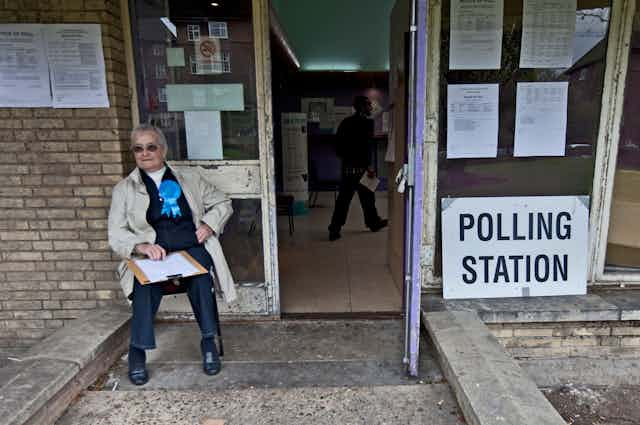Under new government rules, voters across Great Britain will be required to show photographic identification before being given their ballot paper at many elections. (Northern Ireland already requires voters to provide photographic ID.)
But not everyone thinks this is a good idea. Two cross-party parliamentary committees – one on human rights and another on constitutional affairs – have raised serious concerns. The Scottish and Welsh governments don’t think that voter identification is necessary (and so it will not be required for local elections in Scotland and Wales or Scottish and Welsh government elections). Campaigners have called it voter suppression.
Electoral administrators have called for the change to be postponed rather than introduced at the local elections in May 2023. Voter identification is used in many other countries but in Britain, where there is no universal national form of identification already provided, the weight of evidence is against pushing ahead. There are at least six problems with photographic id.
1. There is no evidence of voter fraud
The government claims that voter ID is needed to prevent fraud – that is, someone casting another’s vote at a polling station. But this is exceptionally rare. Research that I undertook with Newcastle University’s Alistair Clark involving a survey of over 5,000 poll workers found that only 0.7% suspected electoral fraud in the polling station in which they worked. And where there was wrongdoing, this was often inadvertent.
Data on convictions and allegations made to the authorities points in the same direction. The general election in 2019 saw millions of votes cast, but just one police caution for using someone else’s vote.
Impersonation is rare because it is not a good strategy for election rigging. There is a high chance that you would be caught. Someone in the polling station may know the real person on the register, and records are kept of who has voted. One or two votes are also very unlikely to change the result of any election. So why try?
2. Photographic voter ID could deny legitimate voters
More worryingly, voter identification requirements lead to eligible citizens not casting their vote. It is difficult to calculate how many, but the voter ID pilots show that most poll workers encountered people who could not vote as they did not have ID. When photographic identification requirements were first introduced in Northern Ireland, it was estimated that 2.3% of the electorate were refused a vote for not presenting the required identification.
The government’s own research found that 4% of Great Britain’s population did not have photographic identification in which they were recognisable. That would mean that approximately 1.9 million people who are currently eligible to vote being excluded from elections.
3. Photo ID discriminates
The burden of having to actively take steps to comply with new rules is going to fall unevenly across the population because some groups are more likely to have access than others.
The decisions made about which forms of identification will be admissible at polling stations also seem to favour older voters over younger voters. Those over 60 years old can use their travel passes as ID but, for example, while younger would-be voters can’t.
This gives the strong impression that accepted forms of identification have been politically chosen.
4. Voter identification is expensive
Introducing voter identification requirements will cost millions. Government estimates show that funding will be needed for training and communications on top of all the basic costs associated with the new rules.
Overall, the cost is estimated to be up to £180,000,000 over a decade. This is in the midst of a cost of living crisis with inflationary pressures being felt by households and businesses, and government departments being asked to find efficiency savings. Voter identification seems to be one obvious saving.
5. The change is happening at too short notice
A golden rule for running elections is not to introduce late legislation. There is a risk that doing so can create unnecessary administrative problems and confusion. International best practice on elections prescribes that there should not be rule changes one year before an election.
Following a fiasco during the 2007 Scottish elections where counts were suspended and 140,000 ballot papers were rejected because of late changes, electoral organisations in the UK believe changes shouldn’t happen fewer than six months before an election.
The government appears to be repeating the same mistakes ahead of the May 2023 local elections. Electoral officials have issued crystal clear warning that there is insufficient time to implement without problems.
6. Other problems need fixing
Perhaps most importantly, there are other areas of elections where improvements could be made. The voter experience could be improved by making voter registration automatic, so that citizens didn’t have to do anything to be registered. Our research shows that the biggest problem in polling stations is unregistered voters.

Election law needs to be rewritten and simplified. There needs to be a complaints process for citizens who experience real problems. Unfortunately, focusing on the red herring of voter fraud is crowding out efforts to address important problems.
A way forward?
There are other options and compromises that could be reached with voter identification. Expanding the rules to include non-photographic ID would be much less discriminatory, for a start.
As evidence that I gave to parliament set out, another option would be to follow a Canadian style vouching system. Following similarly heated debates about voter ID, Canada allows a citizen who has ID and appears on the electoral roll to sign an affidavit confirming the identity of another voter who does not have identification.
This provides a clear paper trail linked to registered voters so that any suspicions of irregularities can be investigated. It also ensures that many citizens without identification, or those who feel uncomfortable providing it, can still cast their vote. Family, friends and neighbours can help one another to participate.
As it stands, photographic identification stands to do nothing to improve elections, but a lot to undermine them.

